Get Ahead of the Curve: 5 Workplace Trends to Watch Out for in 2024

It’s hard to believe that we’re already almost halfway through the decade, but as we approach 2023, it’s important to take a look at the trends that will shape the workplace. As well, as how better you can adapt your work practices to the future!
Experts agree that five key trends will have a big impact on how we work over the next few years. From advances in technology to changes in how we value work-life balance, these trends will affect every aspect of our professional lives. Stay tuned to know about the most important workplace trends to watch out for!
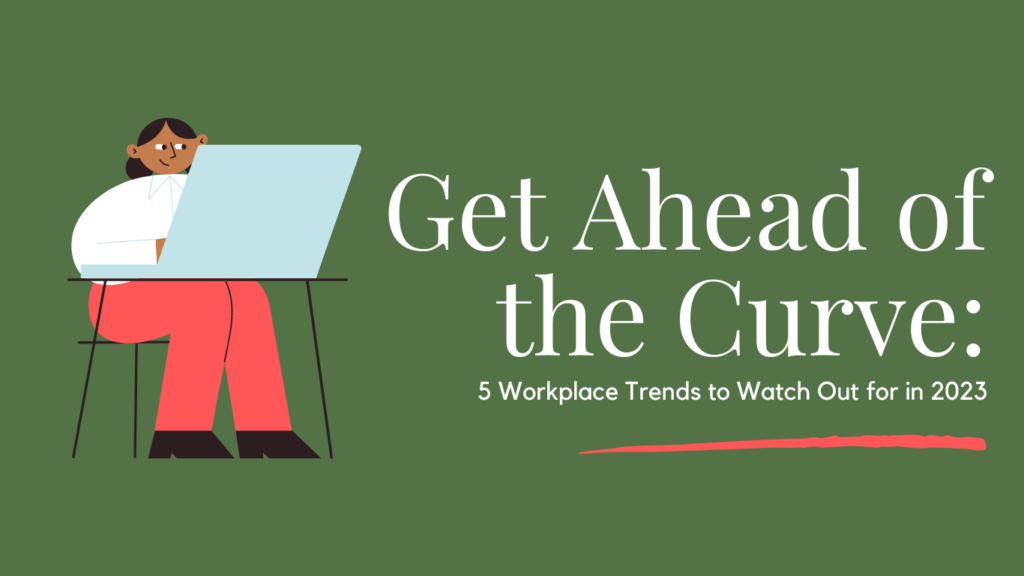
Over the years, our workspaces have changed to adapt to our changes as a society. We have seen the traditional office desk replaced with standing desks and computers that are better able to manage our workflow. We have also seen a shift to more open-concept offices, which allow for better collaboration and more freedom to move around. These changes have not only helped us be more productive but also to be more comfortable and connected in our workspaces.

Certainly, the 1950 workspaces are much different than the ones we are used to now!

The way we work is also changing, with more companies embracing remote working options for employees. This allows individuals to work from home or other locations, giving them more flexibility and autonomy. Along with this shift comes an increased reliance on technology, such as video conferencing, to facilitate communication and collaboration.
With the rise of artificial intelligence (AI), machine learning, and automation, the way we use technology in our workspaces is also changing! If we look at the chart below provided by Indeed.com, we can see the astounding growth in jobs requiring AI skills in the past few years.

AI-powered tools like chatbots and virtual assistants can help us manage tasks, answer queries, and even provide customer service. Automation also helps us streamline processes and improve efficiency, freeing up time for more creative and meaningful work.
Let’s review each of these trends in depth!
5 Workplace Trends to Watch Out for in 2023
As we already know, workplace trends are continuously evolving, making it a challenging task for employers and employees to keep up. Organizations must join the race to digital transformation, pay attention to unpredictable environmental changes, and consider the needs and skills of their employees.
Flexible Workspaces
Flexibility in workspaces goes far beyond simply allowing hybrid working; it is also an environment that offers employees the possibility of choosing different work settings. Whether they prefer a co-working space, hot desks, or an open office floor plan – this flexibility gives them more agency over how and where they conduct their tasks.
For example, we have highlighted with stars the multiple workspaces the office below offers. Can you spot another?
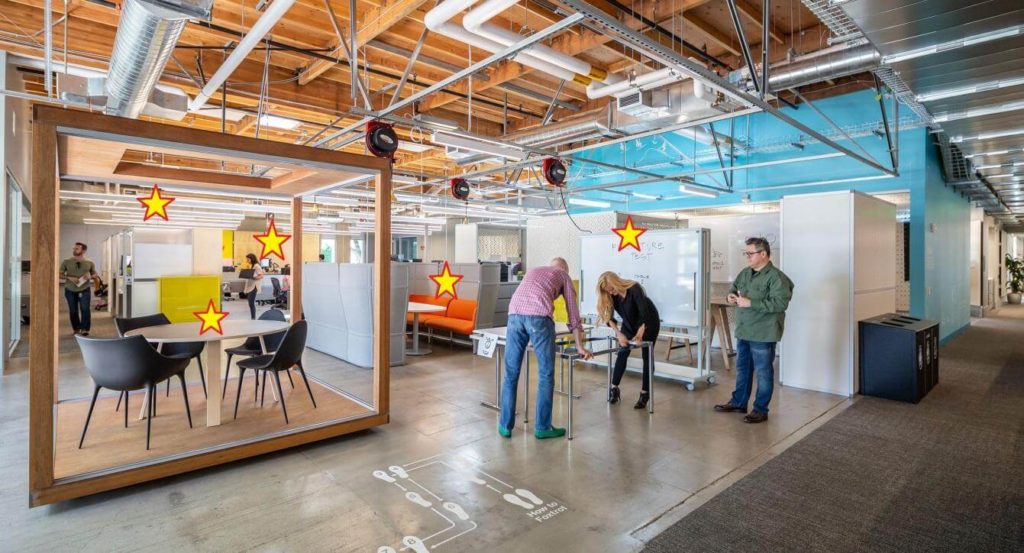
With the rise of remote working, there has been a shift away from traditional office spaces and towards more flexible workspaces better suited to our current lifestyles. This trend will continue in 2023 with more people seeking a mix of remote and on-site work opportunities. Companies need to be prepared to provide workers with more flexible workspaces so they can better manage their work-life balance.
Pros: Offers greater autonomy to people, encouraging collaboration and creativity. Can be challenging for companies to manage and coordinate.
Cons: As beneficial as this trend can be, it comes with a few potential cons such as potential distractions or increased noise levels, or complexity in setting up and managing these spaces.
Automation
Automation is already taking over certain jobs, and this trend will continue in 2023 with the expansion of automation into a wider range of roles. Automation is a process of using technology to automate tasks or processes that would otherwise be done manually. This could include tasks such as data entry, customer service inquiries, or even more complex problem-solving issues.
This shift towards automating tasks could free up workers to focus on higher-level tasks and allow them to free up their time for more creative pursuits.
Below, you can see a graph with the top list of jobs that will be potentially 100% automatized in the near future.
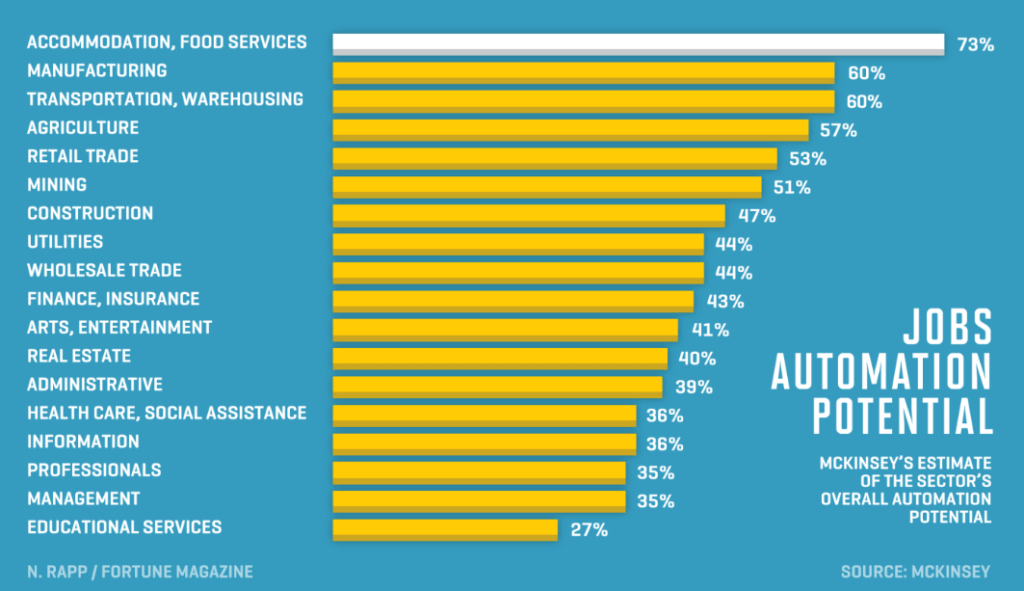
Businesses can also benefit from automation by streamlining processes, reducing human error, and increasing efficiency. Automation can help improve customer service as well as allow employers to better measure and track performance.
Pros: Can reduce human errors, improve accuracy and efficiency, and free up workers for more important tasks.
Cons: Could be challenging to implement and maintain, as well as costly. Potential lack of coordination between humans and machines.
Increased Use of Technology
As technology continues advancing, the future workplace will rely heavily on it for day-to-day operations. Companies should start investing in the latest technologies such as:
- Data analytics: Using data analytics helps employers determine which resources are needed to increase employee productivity, customer satisfaction rates, and successful operations. It also assists them in predicting usage patterns and behaviors that can be used to upgrade software applications or recalibrate customer service procedures.
- Artificial intelligence: Companies are starting to use AI-enabled technologies to do things like customer service calls, schedule appointments, and generate analytics reports. AI can also be used for employee onboarding to aid in the recruiting process, transcribe meeting notes, and even book vacation time for employees.
- Machine learning: Machine learning allows organizations to analyze data quickly and accurately, ensuring the right decisions are made at the right time. Leveraging its possibilities is essential for assuring businesses remain competitive and adaptive in this evolving world.
- Cloud-based technologies: Cloud-based technologies allow businesses to access their data and applications from any device, making collaboration easier and allowing remote work more seamless.
- Robotics: Companies are now using robotics in various industries from manufacturing to healthcare. These robots are designed to assist humans with mundane tasks and potentially improve operational efficiency.
Companies should also consider the environmental shifts they may face while staying flexible enough to adjust when necessary. Most importantly, though, they must prioritize upskilling their workforce; by helping their employees stay ahead of the game in terms of skillset, organizations stand to reap long-term rewards as they pave the way into an uncertain future.
Pros: Using technology streamlines and automates processes reducing labor costs and improving efficiency while also allowing companies to really maximize productivity.
Cons: Complexity in setting up and managing these technologies, potential costs associated with implementation, lack of understanding regarding the use of technology. Data sensitivity issues and privacy concerns among staff members.
Mental Health Awareness
Mental health has become not only a necessity but also a vital component for successful businesses. In fact, managing employee mental health needs is considered one of the most important building blocks for success by 2023.
According to the 2022 Work and Well-being Survey results by the American Psychological Association study, an overwhelming majority of workers (71%) believe employers are now more concerned about their mental health than in previous years. Furthermore, 81% have indicated that they will prioritize finding job opportunities that feature supportive environments for mental well-being when searching for future jobs.
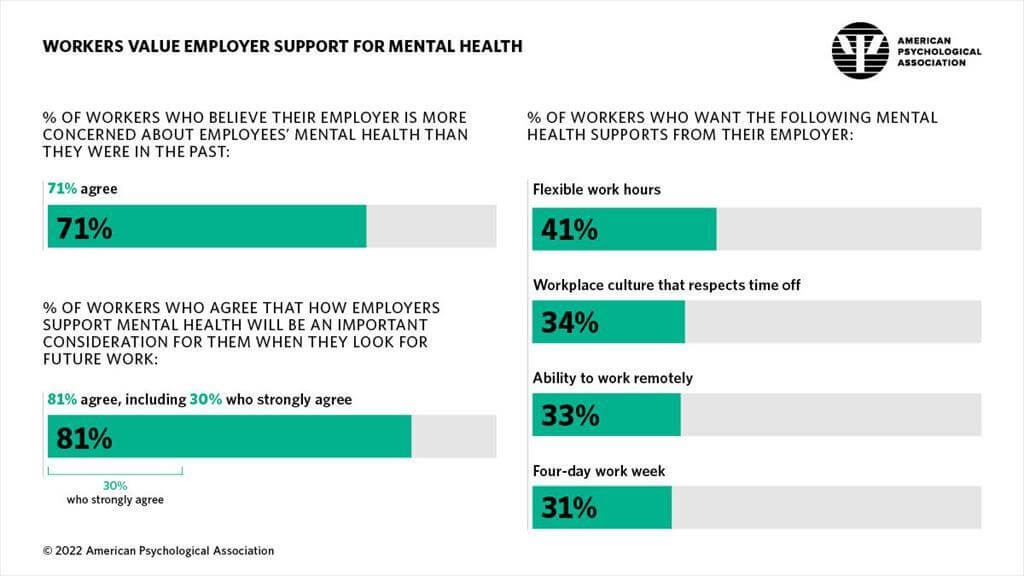
When it comes to implementing mental health awareness in the workplace, there are several key considerations:
- Employers should create an environment where everyone can openly express their feelings without fear of judgment or criticism.
- Consider offering mental health resources such as counseling and therapy sessions, relaxation activities, and mindfulness workshops.
- Employers should ensure a work-life balance for their staff by providing flexible working hours and vacation policies that allow for adequate rest periods.
- Finally, employers should focus on creating an atmosphere of trust and accountability by communicating openly with their staff.
Employers must be aware of and show support towards emerging and ongoing positions of mental health awareness throughout their workplaces to maintain productive and healthy environments. Workplace wellness programs along with helping employees have an improved lifestyle can help employers promote better mental health in their workers which would result in higher levels of productivity, and lower costs associated with absenteeism.

Investing in effective mental health management tools is essential for businesses looking to thrive and remain competitive over the upcoming years – it is vital to implement mental health awareness as an indispensable part of tomorrow’s work culture.
Diversity and Inclusion in the Workplace
The world has been increasingly focusing on diversity and inclusion in recent years, from increasing gender equality to providing an inclusive work environment for all regardless of their background or identity. This social movement has arrived at workspaces.
Businesses must start to look beyond the basics of diversity and inclusion in the workplace. Companies should implement measures to ensure meaningful changes, such as creating an open dialogue, closely collaborating with employees to share ideas and opinions, and establishing anti-harassment protocols.
Let’s remember diversity is not the same as inclusion, and we help you to understand both!

Moreover, companies should also ensure that everyone is given equal treatment, regardless of gender, race, culture, or sexual orientation. This can be achieved through providing equal opportunities and removing any biases in the hiring process, as well as organizing training programs that aim to create a safe and inclusive work environment, and hosting events that promote interaction between colleagues and celebrate diversity.
BONUS!
Skills Over Roles
As technology continues to evolve the skillsets required for successful job tasks, companies are obligated to invest in upskilling and re-training their workforce. This means that employers should be focusing on individuals who can bring added value and multiple skill sets, instead of worrying about matching every job role exactly. Keyword: skills-based hiring.
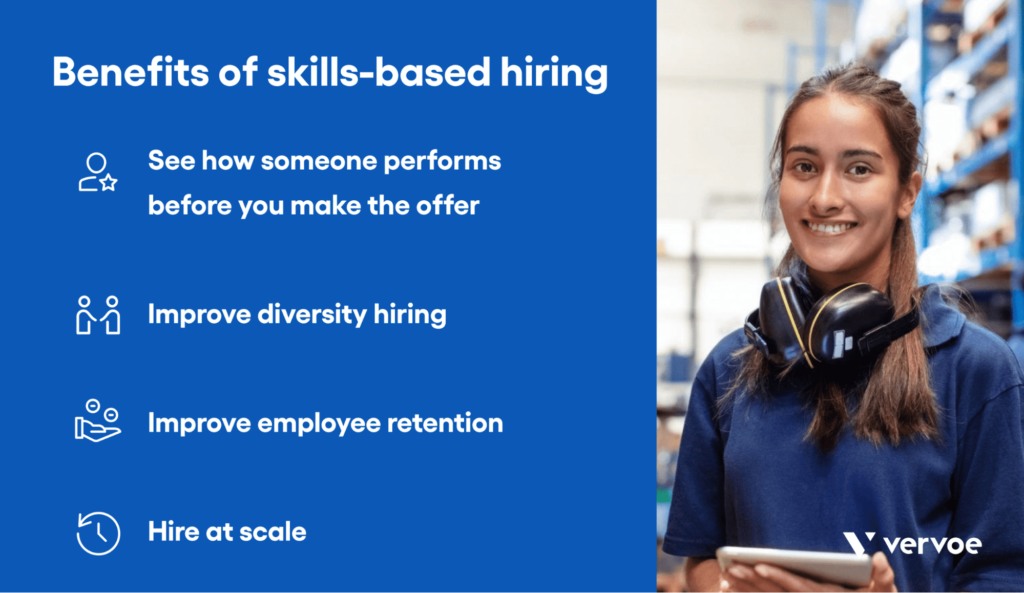
Organizations that hire based on skills rather than roles or degrees can create a diverse, innovative, and talented workforce. This approach allows companies to not only benefit from the skills of each employee but also the collective knowledge, experience, and creativity of the whole team
Adapting this process allows companies to be more flexible and efficient use their resources. Additionally, recruiting for skills requires less time and effort in addition to finding better-suited candidates since a particular job title may have outdated metrics attached.
The Challenges of the 2030 Workforce: For CEOs and Employees
The most important challenge to address is that we are still human and we will still be working alongside humans! Therefore, keeping humanity in our shared spaces is the paragon every company should thrive to preserve.
The 2030 workforce will feature more agile working, with an emphasis on virtual teams and a focus on creativity, innovative thinking, and individual problem-solving skills.
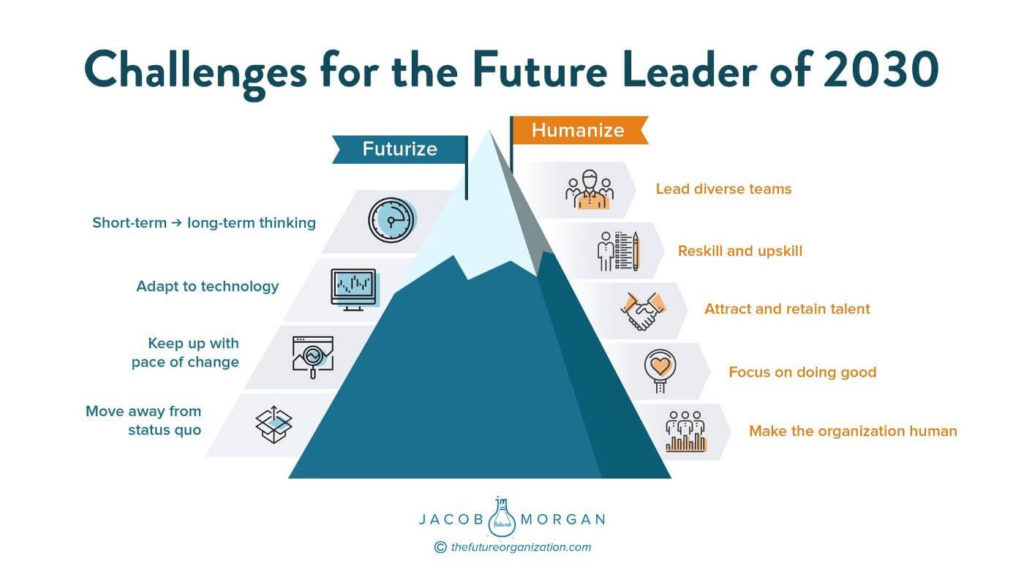
The Role of the CEO in a Company of the Future
CEOs need to make sure that their staff is equipped with the necessary training and tools to embrace advancements in technology while feeling secure in their roles. In addition, they must ensure they reflect on prior successes while looking ahead to the future needs of their company, which may differ significantly from what employers have needed or expected in the past.
The Role of Employees in a Company of the Future
Employees will also face challenges at the workplace such as creating a balance between developing an advanced skill set applicable in today’s society while maintaining some aspects of traditional working practices such as communication with colleagues and clients. This requires employees to remain proactive with their own personal development even after leaving school or university.
Companies will need to become more flexible, and adaptable, embracing diversity, inclusion, and modern practices of recruitment and hiring, as well as making use of greater data analysis capabilities. With AI-driven automation playing an increasingly large role in businesses’ operations – from team management to customer service – CEOs need to ensure that the human element is still at the forefront when it comes to decision-making processes to successfully fulfill the 2030 workspace shown below!
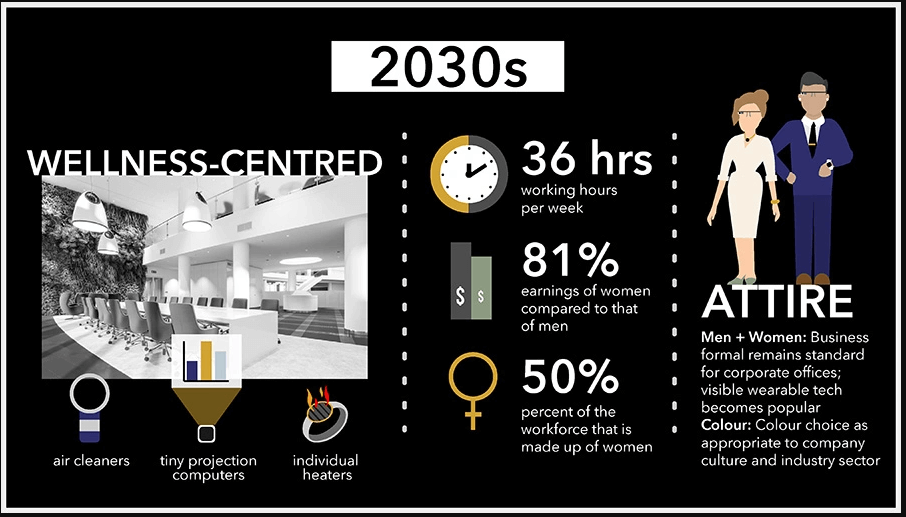
Takeaway
These five workplace trends plus the bonus are just the beginning of the changes we can expect to see in 2023. Businesses need to update their approaches and embrace the changes that accompany this new era of work. By staying ahead of the curve with these workplace trends, businesses can ensure that they remain competitive in this ever-evolving market.
Additionally, companies should also strive to create a safer and healthier work environment by investing in effective mental health management tools as well as promoting diversity and inclusion amongst their employees so that everyone has an equal opportunity. Finally, businesses must focus on skills over roles when it comes to recruiting, as this will help them find better-suited candidates and consequently create a more successful work environment.
Stay tuned for more blog posts like this one!
-The Monitask Team


